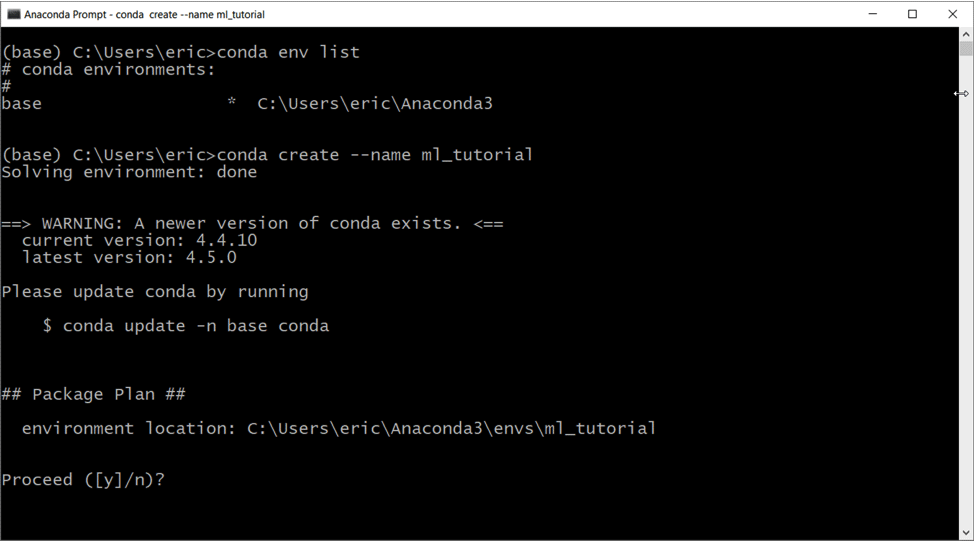


This will install on activated envĪt the end of the day, conda is there to help you. Python -m pip install -r requirements.txtĪt any point, we can add packages in conda environment with # this will install requests to ml_api env. You can then install additional packages by following. I will do: conda create -name ml_api python=3.7 -c conda-forge scikit-learn pandas Miniconda is a minimalist version of Anaconda and includes a basic Python and the Conda package manager. For example, if I have a project with requirements.txt to be installed with pip but would like it to have pandas and scikit-learn from conda-forge. This will: Create a new conda environment (a. In fact, we often use a mix here and there. Open a terminal (or Anaconda Prompt) and type: conda create -name ENVNAME python3.9. Use the conda install command to install 720+ additional conda packages from the Anaconda repository. Create a new environment with Streamlit Follow the steps provided by Anaconda to set up and manage your environment using the Anaconda Navigator. It is a small, bootstrap version of Anaconda that includes only conda, Python, the packages they depend on, and a small number of other useful packages, including pip, zlib and a few others. create an environment, activate, install packagesĬonda install package_name another_packageĬonda create -n env_name python=3.8 package_name another_packageīoth methods are correct. Miniconda is a free minimal installer for conda.

There are multiple ways to create and install packages using conda.


 0 kommentar(er)
0 kommentar(er)
